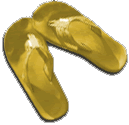St George and killing dragons
My Brother George likes to say he was named after King George VI of England. You see, King George was named first and my brother came after that.
I have a definite affinity with the name George. My grandfather, father, brother and son were named George. I have a granddaughter named Georgia and other relatives with George as their first or second name.
All this makes the Feast of St George on April 23 an important date. St George is usually pictured killing a dragon. Legends and romantic lore have popularized this noble figure. In fact, St George was a Christian martyred by Diocletion in 303 A.D.
St George’s popularity springs from the noble figure he presents in history. Even today many countries including England, Belgium, Georgia and Portugal have St George as their patron saint. St George was a noble and chivalrous Roman soldier. His slaying of a dragon to save a young princess is the stuff of fairy tales.
The dragon may symbolize Satan or evil. We all need a hero to emulate in our struggles for good. C.S. Lewis wrote, “Since it is so likely that children will meet cruel enemies, let them at least have heard of brave knights and heroic courage.”
C.K. Chesterton said that children do not meet bogies in fairy tales; their imaginations naturally provide this villainy. Chesterton said the fairy tale provides a St George to kill the dragons of the imagination. St George’s triumph is also the triumph of Christ.
Killing dragons is something we all related to as children. Witness the popularity of the heavy metal 1980’s band Dio and their song “Killing Dragons”:
Killing dragons with swords made of wood
We chased them away
But they came back today
And I'd fight them again if I could.
As one fan texted: “Every time I listen to this I am killing one more dragon in my imagination.” Indeed the “Killing Dragons” song was a statement against injustices and what the world is doing to stop them.
Each of us has our own dragons to fight; internal, like temptations, and external, like the struggles of life. In the book Saint George and the Dragon, as George is preparing to fight the dragon, he sees a vision of a “high city” that symbolizes Heaven. Before you and I reach that high city or the New Jerusalem, we have to go into the valley to fight and defeat the dragons in our lives.
The legend of St George inspires hope in us that with Christ’s help we can defeat our dragons. Small wonder this mythical hero has grown to such heroic proportions. The formula for success follows the three virtues of St George:
Courage – choosing to do the right thing in facing the dragon, Compassion –putting ourselves in danger to protect others, and Perseverance – persisting against defeat.
Like St. George, we are all on our path to the “High City” glimmering in the distance, and his story reminds us of what it takes to get there. Someday when we approach its pearly gates, we can hope to say with St. Paul and in imitation of St. George, “I have fought the good fight, I have finished the race, I have kept the faith.” (2 Timothy 4:7-8).
(548 words)

